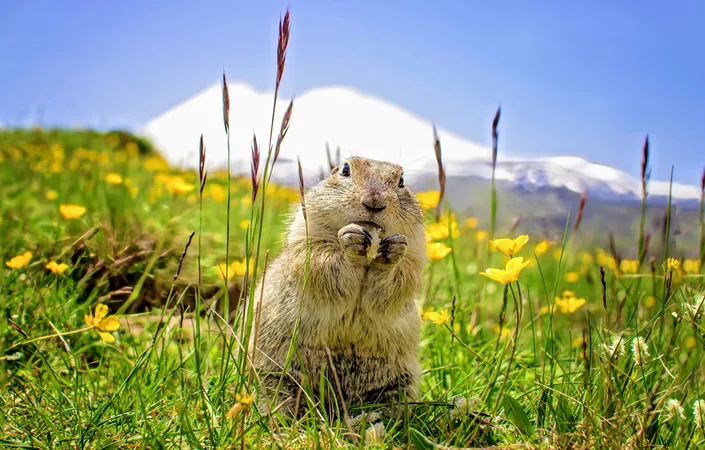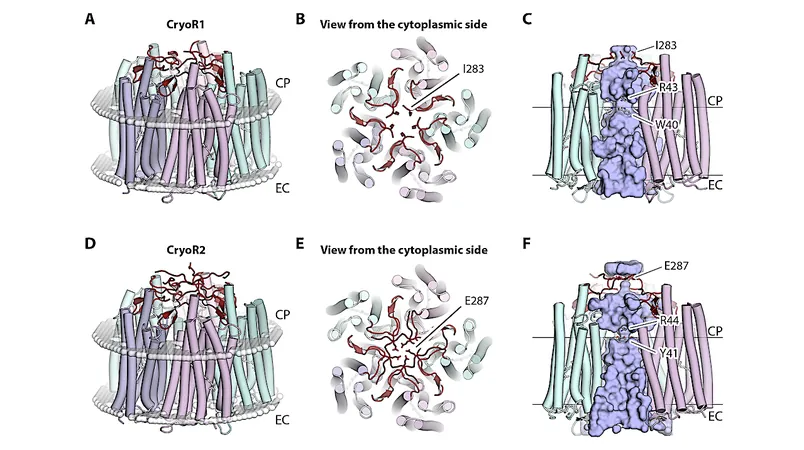
The Unlikely Heroes: How Gophers Brought Life Back to Mount St. Helens After its Cataclysmic Eruption
2024-11-07
Author: Liam
Gophers: The Unlikely Champions of Recovery
In the desolation that followed the eruption, the landscape was stark and lifeless. Many feared that the destruction was irreversible, as flora and fauna disappeared, leaving only ashes behind. However, scientists began contemplating a rather audacious hypothesis: could gophers, those small, seemingly inconsequential rodents, play a role in rejuvenating this devastated ecosystem?
The theory was simple yet profound. By burrowing into the ground, gophers could unearth and mix beneficial bacteria and fungi from the deeper layers of soil, distributing them across the barren areas. This process could lay the groundwork for revitalization, permitting new plant life to take root.
"They’re often considered pests," noted Michael Allen, a professor of plant pathology at UC Riverside. "But we thought they would take old soil, move it to the surface, and that would be where recovery would occur."
A 24-Hour Experiment with Long-Lasting Effects
After two years of contemplating this theory, scientists decided to put it to the test. They introduced gophers to parts of Mount St. Helens, allowing them to burrow in the scorched earth for just 24 hours. Astonishingly, the effects of this brief intervention have persisted for over 40 years.
Recent research published in the journal *Frontiers in Microbiomes* reveals a continued change in the soil communities of fungi and bacteria in the areas where gophers were present. Remarkably, this resurgence was absent in areas untouched by these little creatures.
"In the 1980s, we were just testing the short-term reaction," Professor Allen remarked. "Who would have predicted you could toss a gopher in for a day and see a residual effect 40 years later?"
A Canvas of Interconnected Life: Mycorrhizal Fungi's Role
The role of gophers in the ecological recovery of Mount St. Helens exemplifies just one piece of the larger puzzle. A crucial player in the revitalization process is mycorrhizal fungi, which form symbiotic relationships with plant roots, facilitating nutrient exchange and protecting plants against pathogens. In the aftermath of the eruption, these fungi became instrumental in aiding new vegetation’s establishment, particularly in such a harsh environment.
"The fungi transport these nutrients to the plants, and in return, they receive carbon for their growth," Professor Allen explained.
Diverging Recovery Paths: The Tale of Two Mountainsides
The implications of this discovery are far-reaching. For instance, one side of Mount St. Helens housed an old-growth forest, which surprisingly began to flourish soon after the eruption. The trees, including pines and firs, had mycorrhizal fungi that utilized the fallen needles to absorb vital nutrients, allowing rapid regeneration.
Conversely, the clear-cut side had no such advantage after the eruption. Without trees or debris to feed the soil, this area remains largely lifeless to this day.
A Lesson in Nature's Resilience
The findings underscore the intricate interplay of life in nature and highlight the significance of organisms we often overlook, such as microbes and fungi. Mia Maltz, the study's lead author, emphasizes, "We cannot ignore the interdependence of all things in nature, especially the things we cannot see."
The recovery of Mount St. Helens stands as a powerful reminder of nature's resilience, the impact of scientific inquiry, and the interconnectedness of life forms.
Let’s not overlook the tiny gophers—small yet mighty heroes who played a monumental role in breathing life back into a once-scorched mountain. This fascinating case shows just how crucial every organism, no matter how small, can be in restoring the balance of nature.
Stay tuned for more astonishing stories of nature’s miracles and the unwritten tales of recovery!









 Brasil (PT)
Brasil (PT)
 Canada (EN)
Canada (EN)
 Chile (ES)
Chile (ES)
 Česko (CS)
Česko (CS)
 대한민국 (KO)
대한민국 (KO)
 España (ES)
España (ES)
 France (FR)
France (FR)
 Hong Kong (EN)
Hong Kong (EN)
 Italia (IT)
Italia (IT)
 日本 (JA)
日本 (JA)
 Magyarország (HU)
Magyarország (HU)
 Norge (NO)
Norge (NO)
 Polska (PL)
Polska (PL)
 Schweiz (DE)
Schweiz (DE)
 Singapore (EN)
Singapore (EN)
 Sverige (SV)
Sverige (SV)
 Suomi (FI)
Suomi (FI)
 Türkiye (TR)
Türkiye (TR)
 الإمارات العربية المتحدة (AR)
الإمارات العربية المتحدة (AR)